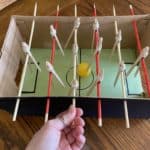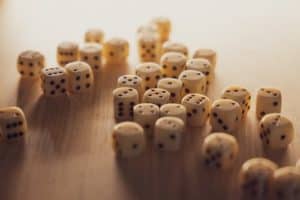Overview
You will design, create and build a foosball game using recycled materials and other materials.
Foosball is a tabletop version of soccer that requires two players. In this game, each player will use rods to steer their popsicle stick players by turning, pushing and pulling the rods to hit the ball into the opponents goal. This game of Foosball will have 6 popsicle stick players on each team including the goaltender. Through a series of step-by-step instructions you will use your recycled materials and other materials to develop your very own Foosball game.
Background Information
Game design helps you develop computational thinking skills. As an example, you might use decomposition as a thought process to break down the steps in order to create a foosball game, or pattern recognition while playing the game that allows you to problem-solve and score a goal against your opponent. As mentioned by BBC, computational thinking can be broken down into four main categories: decomposition, pattern recognition, abstraction, and algorithms.
- Decomposition is a thought process that allows you to break down a problem in smaller steps.
- Pattern recognition allows you to connect the given problem to problems you have previously encountered.
- Abstraction allows you to focus on relevant information and problem solve by focusing on your core knowledge surrounding the problem.
- Algorithmic thinking allows you to develop a solution to a given problem through sequential rules.
For more information on computational thinking, read the following article and lesson provided by BBC Bitesize.
STEAM education allows you as the learner to develop critical thinking skills such as assessing the task, problem solving and evaluating or improving your creation.
Materials
- Shoe box or similar sized cardboard box with open top
- 24 popsicle sticks
- 12 elastic or rubber bands
- Construction paper
- 6 wooden dowels (you can also use skewers or straws)
- Glue
- Ruler
- Scissors
- Markers or pencil crayons
- Small ball (such as a ping pong ball)
Step by Step Instructions
The following step-by-step instructions will take you through designing, creating and building your very own foosball game.
Step 1 → Cut out one square from each end of the shoebox to represent the goaltender nets.
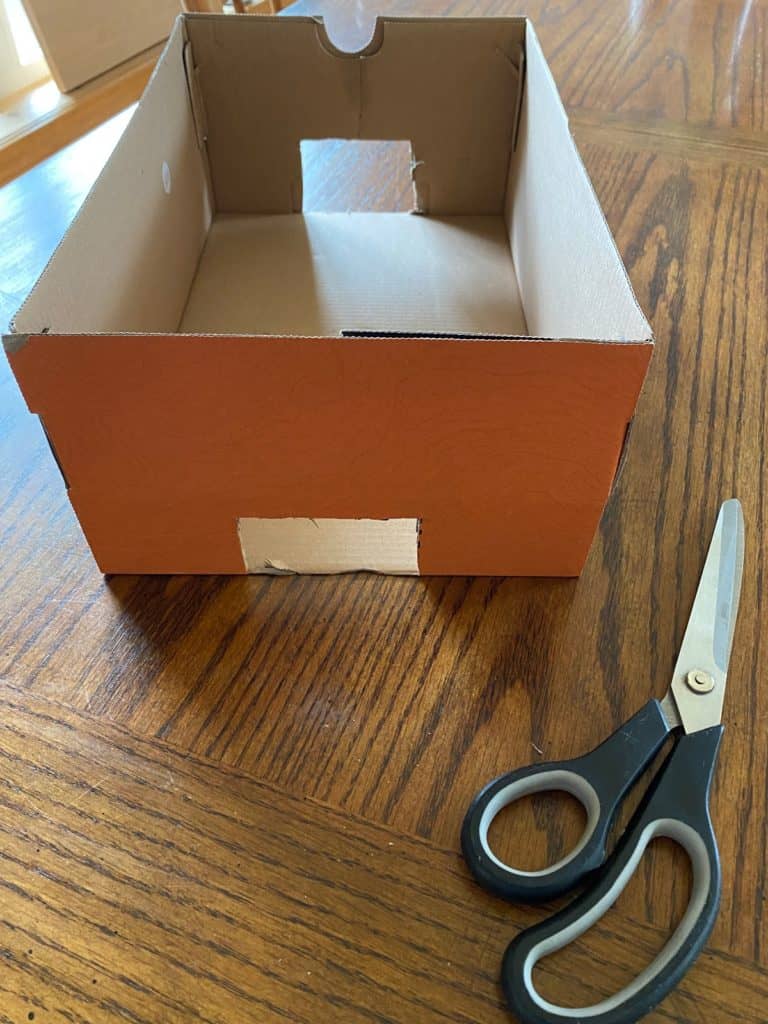
Step 2 → Colour 3 out of 6 wooden dowels (skewers or straws) one colour so you can tell which players belong to each team. These will represent the rods on a foosball table.

Step 3 → Cover the bottom of your box with green construction paper (or any colour you want) to represent the soccer field! Design it using markers or pencil crayons!
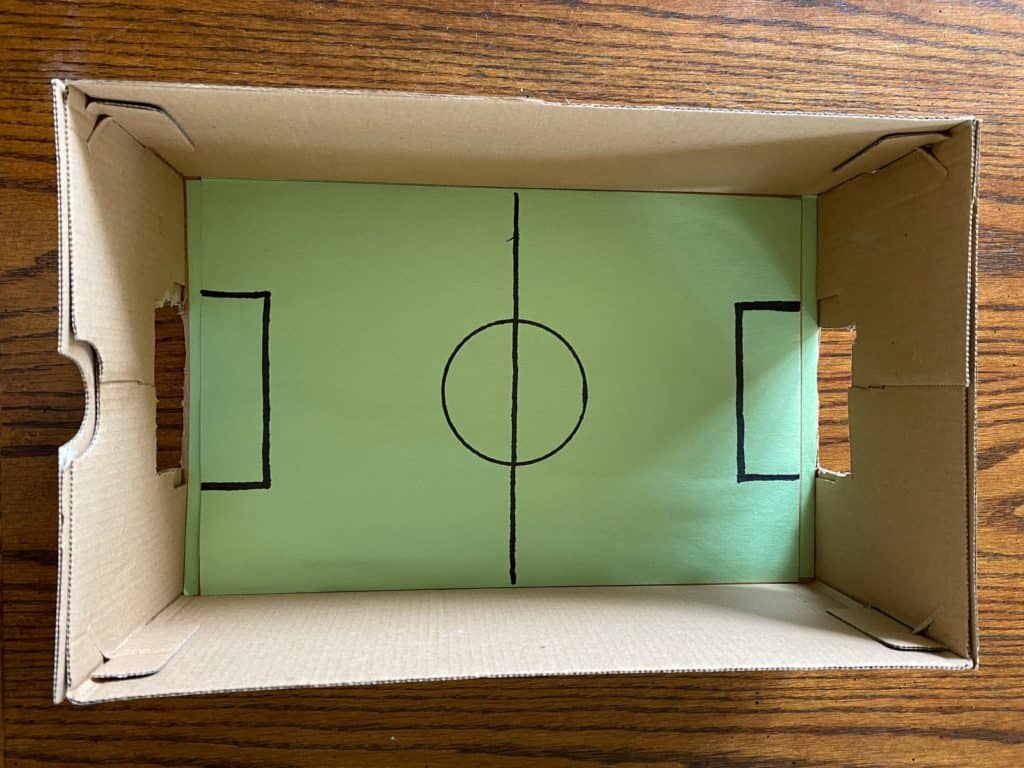
Step 4 → Measure the length of your shoe box. You are going to divide that number by 6 because you will be using 6 dowels and you want them to be evenly spaced across the playing field. By measuring the length and dividing the length by 6, this will tell you how far apart the wooden dowels (skewers or straws) will go.
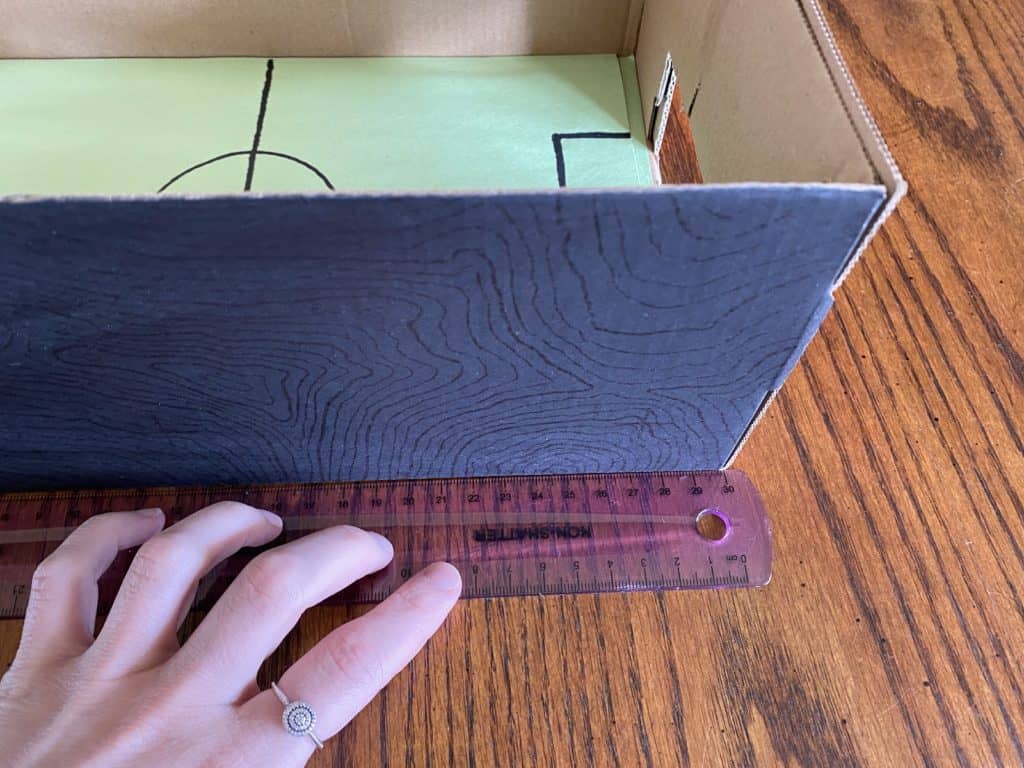
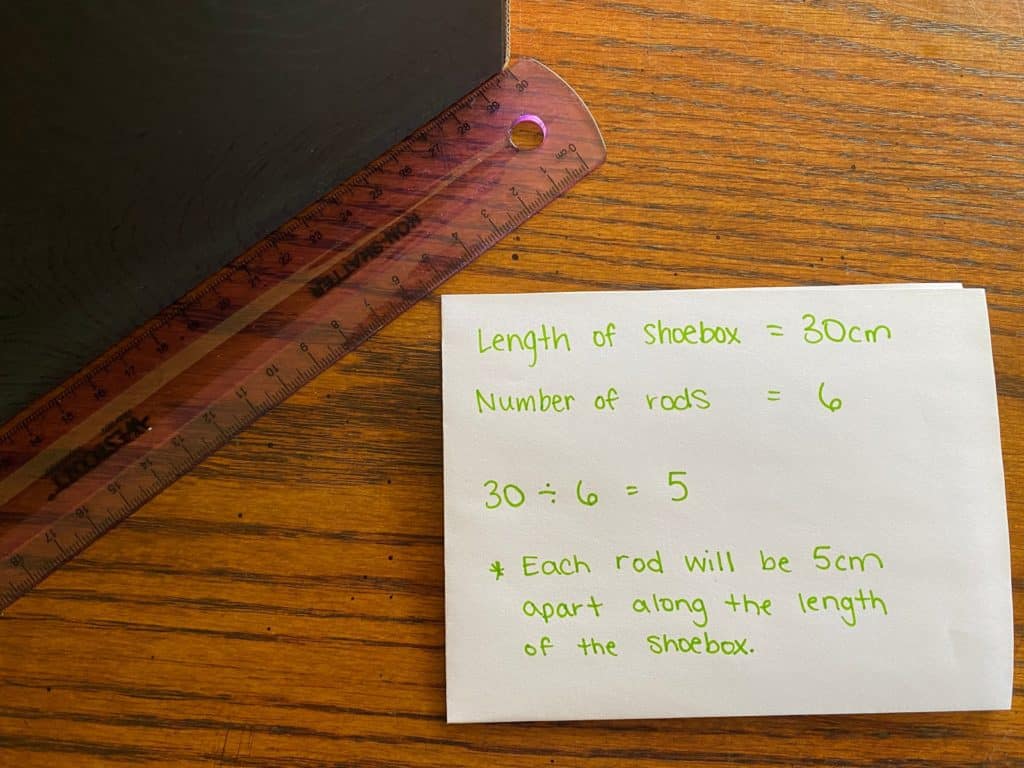
Step 5 → Using a pencil ruler, measure then mark out the spacing for your 6 rods along the two long sides (the ones without the goaltender nets) of the shoe box just below the top edge.
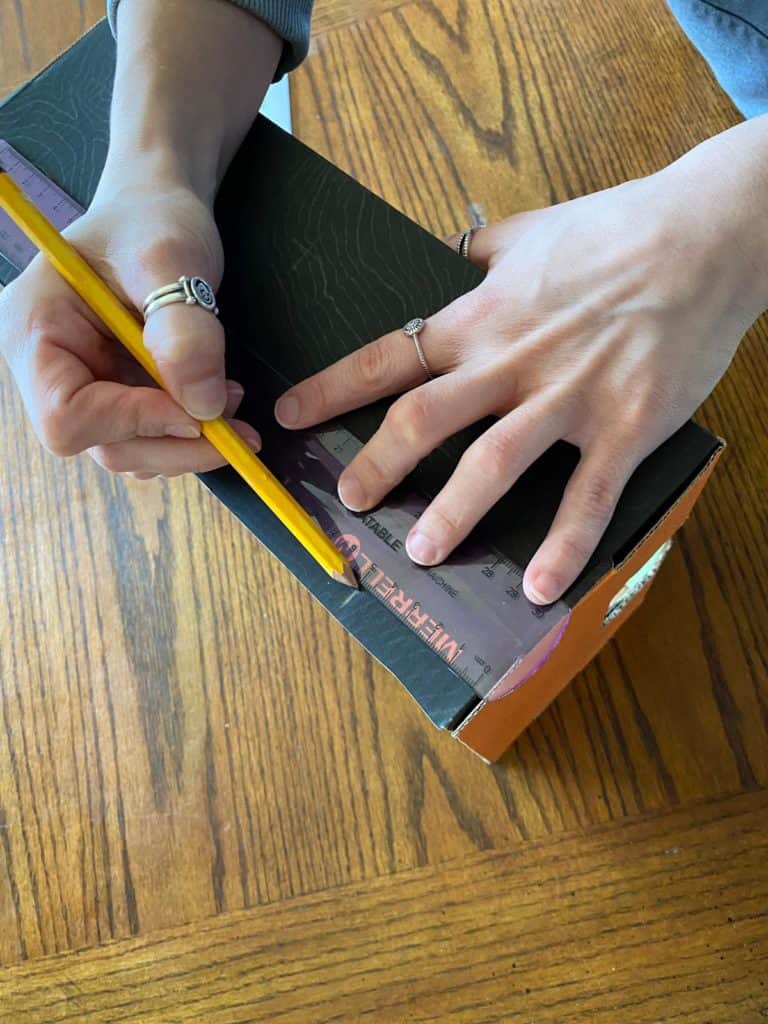
Step 6 → Using your pencil, wooden dowel or skewer, poke through the holes you measured out on both sides of the shoebox (12 holes total). Note: you may need to ask a parent, guardian or older sibling for help with this step to avoid poking a finger or making the holes too big.

Step 7 → Push wooden dowels (skewers or straws) through the holes on one side of the shoebox all the way through the hole that is opposite on the other side of the shoebox. Rotate between the two colours so that every other dowel is a different colour to create a pattern.
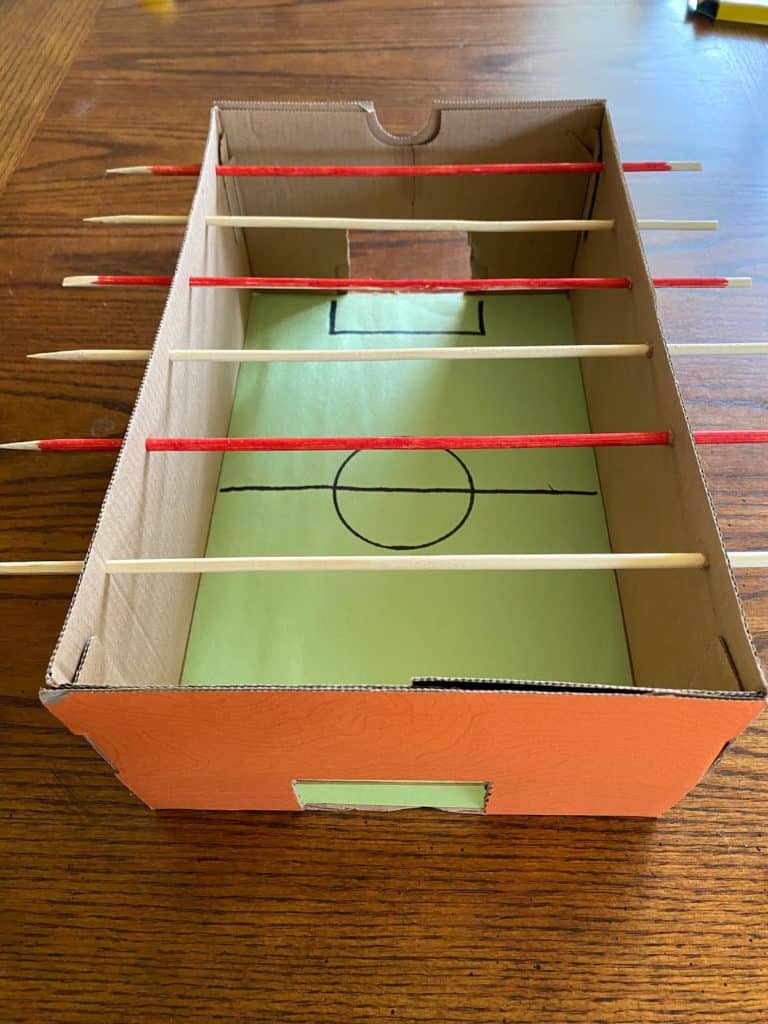
Step 8 → Place two popsicle sticks together. Wrap an elastic band tightly around the top of the two popsicle sticks. This will represent a foosball player. Repeat this step 11 more times so that you have 12 players in total.
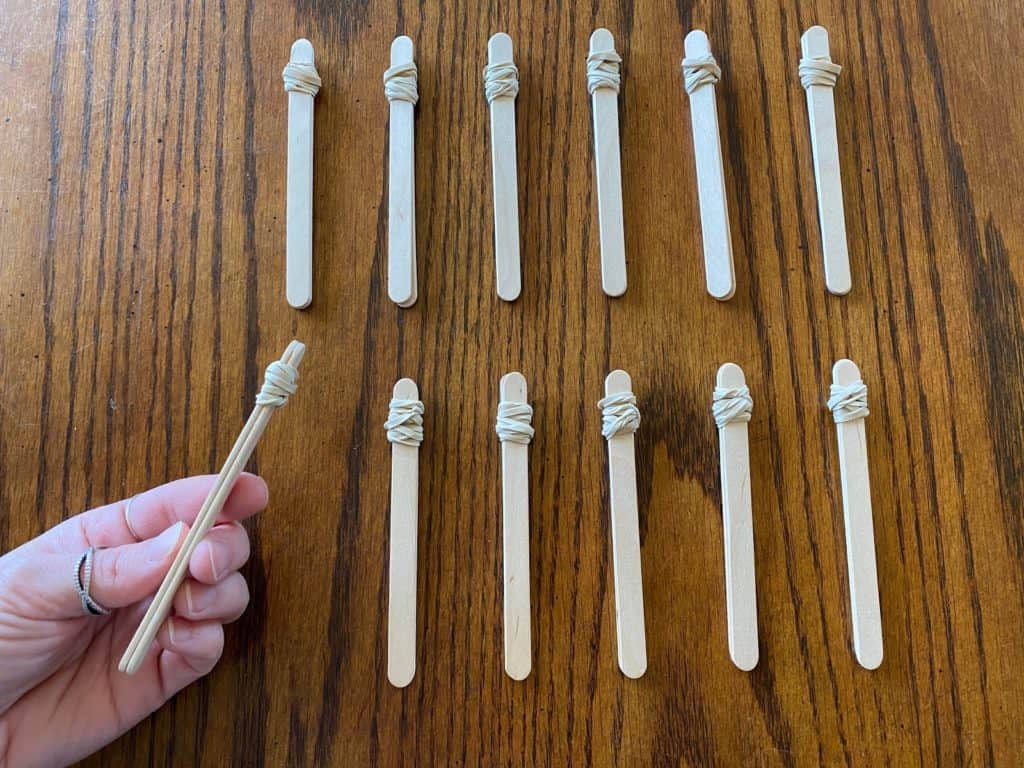
Step 9 → Start at one end of the shoebox and place the popsicle stick players on the wooden dowels (skewers or straws). To do this, gently pull the two ends that are not stuck together with the elastic band and slide one on each side of the wooden dowel (skewer or straw). Starting at one end of the shoe box, place the players in the following order or see table below for player placement:
- Place one player centered on the wooden dowel closest to you.
- Place two players spaced out on the next wooden dowel.
- Place three players spaced out on the next wooden dowel.
- Place three players spaced out on the next wooden dowel.
- Place two players spaced out on the next wooden dowel.
- Place one player centered on the last wooden dowel.
——X——
—X—-X—
-X—X—X-
-X—X—X-
—X—-X—
——X——
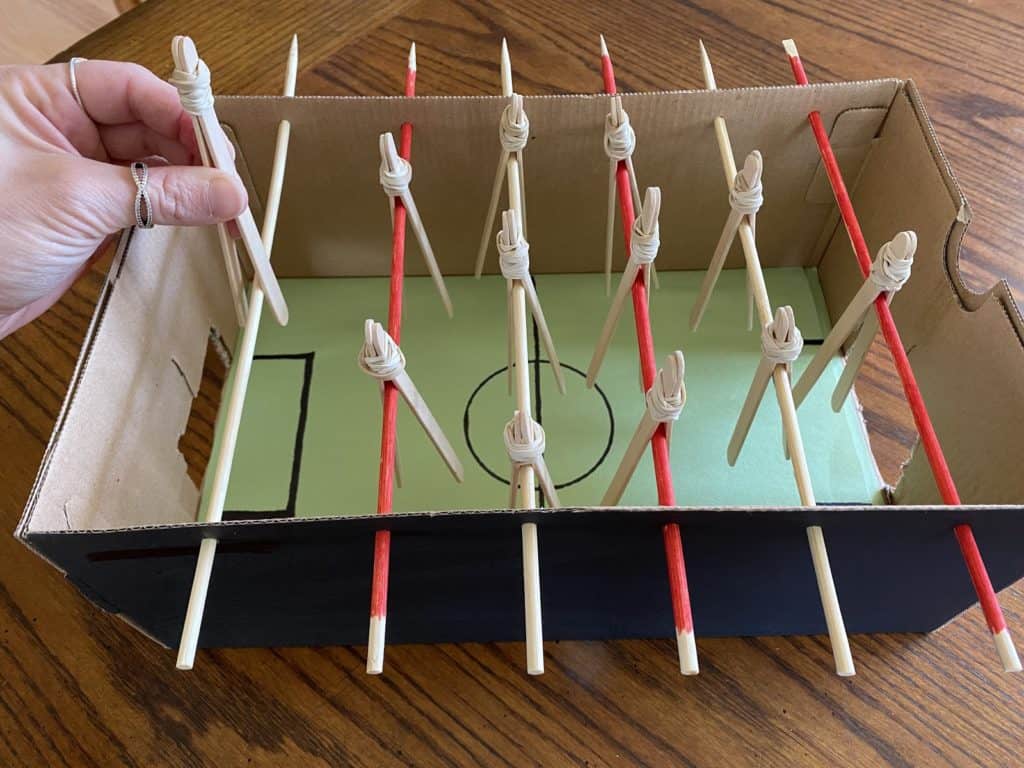
Step 10 → Find another player! Place the small ball in the middle of the playing field. Pick one of the coloured sets of wooden dowels (skewers or straws). Push, pull and twist your wooden dowels to try and score a goal on your opponent’s net!
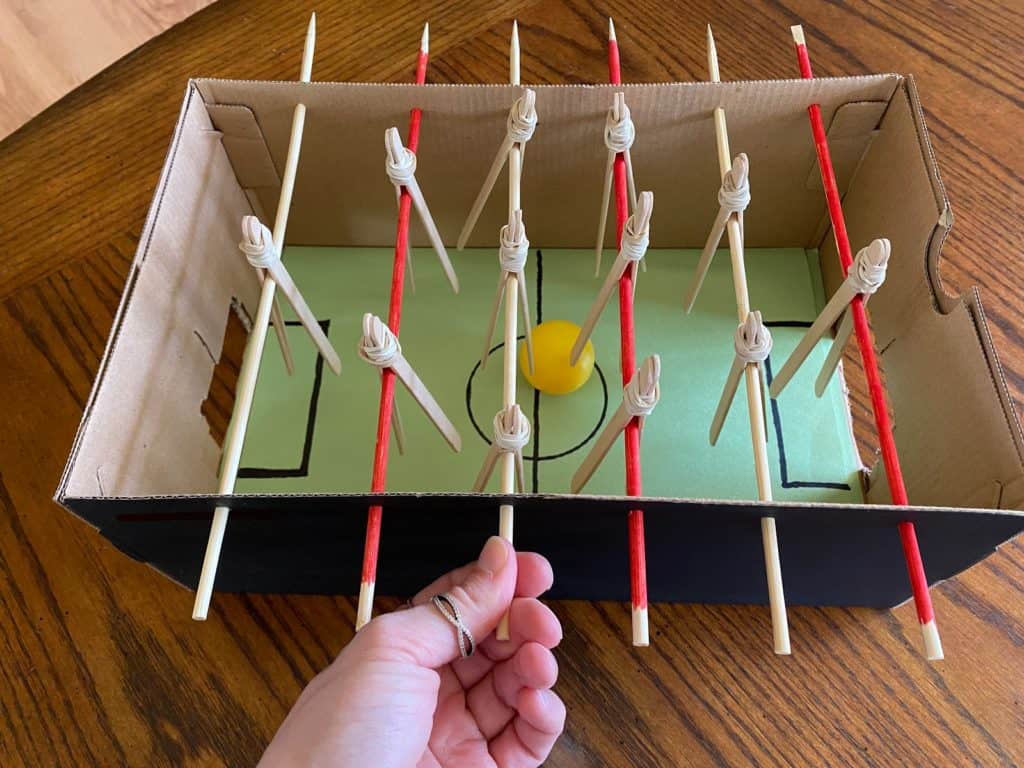
Follow Up
We want to see the awesome things you’re creating! Share your work with us online by tagging @pinnguaq on Facebook, Twitter or Instagram. Don’t forget to include the hashtag #LearnWithPinnguaq! You can also send us your work by email at media@pinnguaq.com.
